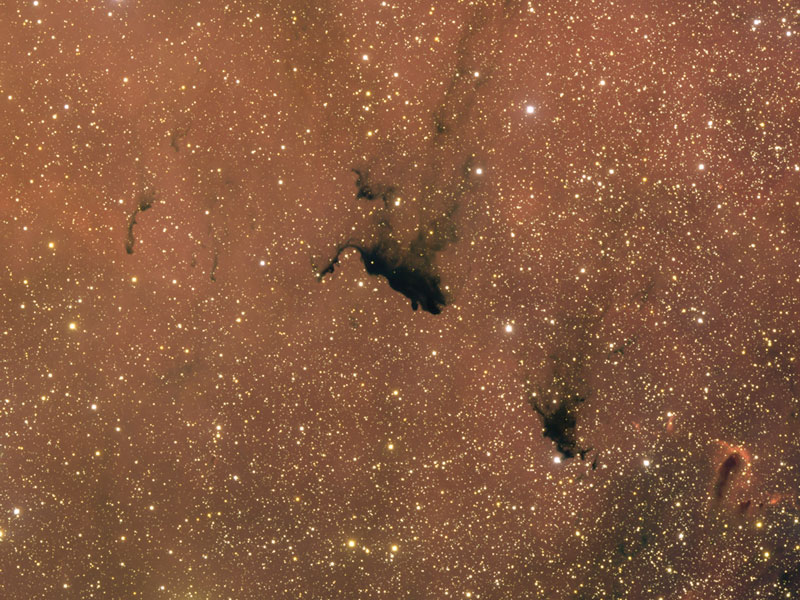Explanation: It may look to some like a duck, but it lays stars instead of eggs. In the center of the above image lies Barnard 163, a nebula of molecular gas and dust so thick that visible light can't shine through it. With a wing span measured in light years, Barnard 163's insides are surely colder than its exterior, allowing conditions where gas can clump and eventually form stars. Barnard 163 lies about 3,000 light years from Earth toward the constellation of Cepheus the King. The red glow in the background results from IC 1396, a large emission nebula that houses the Elephant's Trunk Nebula. Finding Barnard 163 in an image of its greater emission nebula IC 1396 can be a challenge, but it's possible.
News: Night and Day are Equal: Today is an
Equinox
1999 2000 2001 2002 2003 2004 2005 2006 2007 2008 2009 2010 2011 2012 2013 2014 2015 2016 2017 2018 2019 2020 2021 2022 2023 2024 2025 |
Yanvar' Fevral' Mart Aprel' Mai Iyun' Iyul' Avgust Sentyabr' Oktyabr' Noyabr' Dekabr' |
NASA Web Site Statements, Warnings, and Disclaimers
NASA Official: Jay Norris. Specific rights apply.
A service of: LHEA at NASA / GSFC
& Michigan Tech. U.
|
Publikacii s klyuchevymi slovami:
molecular cloud - absorption nebula - Molekulyarnye oblaka - temnaya tumannost'
Publikacii so slovami: molecular cloud - absorption nebula - Molekulyarnye oblaka - temnaya tumannost' | |
Sm. takzhe:
Vse publikacii na tu zhe temu >> | |
